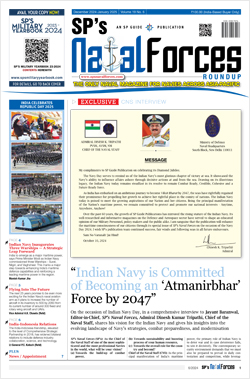INDIAN ARMED FORCES CHIEFS ON OUR RELENTLESS AND FOCUSED PUBLISHING EFFORTS

The insightful articles, inspiring narrations and analytical perspectives presented by the Editorial Team, establish an alluring connect with the reader. My compliments and best wishes to SP Guide Publications.

"Over the past 60 years, the growth of SP Guide Publications has mirrored the rising stature of Indian Navy. Its well-researched and informative magazines on Defence and Aerospace sector have served to shape an educated opinion of our military personnel, policy makers and the public alike. I wish SP's Publication team continued success, fair winds and following seas in all future endeavour!"

Since, its inception in 1964, SP Guide Publications has consistently demonstrated commitment to high-quality journalism in the aerospace and defence sectors, earning a well-deserved reputation as Asia's largest media house in this domain. I wish SP Guide Publications continued success in its pursuit of excellence.
- MoD initiates comprehensive review of Defence Acquisition Procedure 2020, pushes for defence reforms
- G7: The Swansong
- Kalinga Connect: South Asia to Polynesia
- Advanced MRSAM for India for a greater firepower
- Must Credit DRDO for Operation Sindoor, now what is next for defence R&D?
- Operation Sindoor | Day 2 DGMOs Briefing
- Operation Sindoor: Resolute yet Restrained
Tushil Boosts Indian Naval Power Further
Indian Navy is steadily augmenting its underwater, surface and aviation capabilities for a comprehensive naval deterrence
 |
The Author is Former Director General of Information Systems and A Special Forces Veteran, Indian Army |
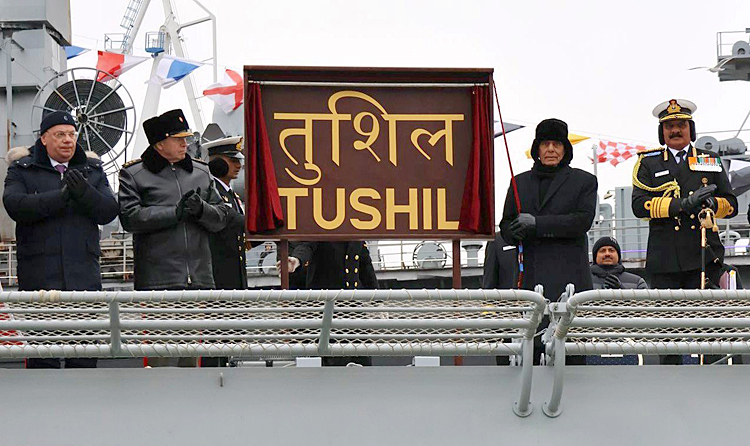

Defence Minister Rajnath Singh visited Moscow and Kaliningrad from December 8-10, 2024 and attended the flag-raising ceremony of the Project 11356 frigate INS 'Tushil' and its commissioning into the Indian Navy on December 9. In November 2018, Russia and India had signed a contract for the delivery of four Project 11356 frigates. Under the deal, two frigates will be built in Russia at the Baltic shipyard Yantar in Kaliningrad and two more at India's Goa Shipyard Limited. Project 11356 frigates are designed to engage enemy surface ships and submarines in both littoral and oceanic waters, as well as for engaging air targets both independently and as part of a ship's mission. Frigates of this type are armed with 100mm A-190 artillery, missile and anti-aircraft systems, torpedo armament. Anti-submarine helicopters also, can be based on them.
INS Tushil, an upgraded Krivak-III class frigate, was commissioned into the Indian Navy on December 9, 2024, enhancing India's operational capabilities in the Indian Ocean.
INS Tushil, an upgraded Krivak-III class frigate, is the seventh ship in this series, with six others already operational in the Indian Navy, including three Talwar-class and three Teg-class frigates. 125 meters in length and weighing about 3,900 tonnes, it integrates advanced Russian and Indian technologies, boasting enhanced stealth features and stability characteristics. INS Tushil has undergone extensive trials since January 2024, achieving speeds of over 30 knots during testing. These trials validated all onboard Russian equipment and weapon systems. It will join the Western Fleet of the Indian Navy, enhancing India's operational capabilities in the Indian Ocean.
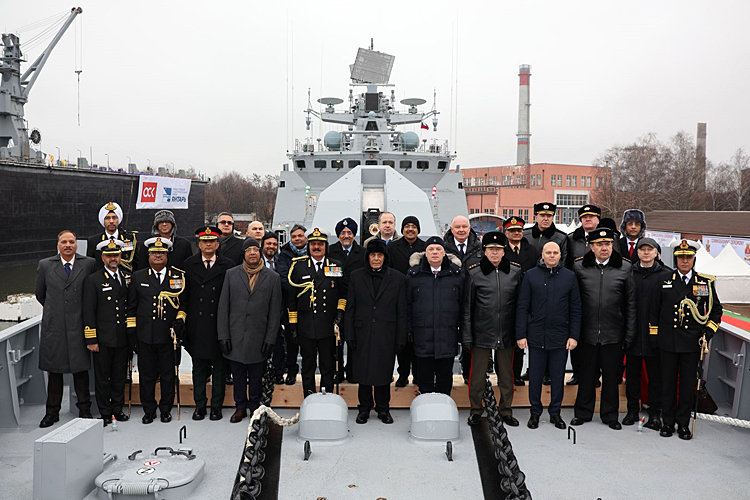
On December 9, 2024, Indian Navy Chief, Admiral Dinesh Tripathi, announced that the first indigenously-built nuclear-powered attack submarine (SSN) will be operational by 2036 and the second SSN is expected to be delivered within two years.
The Indian Navy's first indigenously-built nuclear-powered attack submarine (SSN) is expected to be operational by 2036, with a second SSN set for delivery within two years.
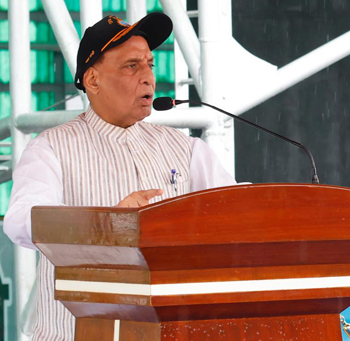
INS 'Arighat', India's second nuclear-powered ballistic missile submarine (SSBN), is currently undergoing trials prior to operational deployment. Also, a new Very Low Frequency (VLF) communication station in Telangana is being established to enhance command and control for long-range patrols of nuclear submarines. Indian Navy's 1st Nuclear Submarine Base is to be ready by 2026.
Earlier on November 28, 2024, India successfully tested its nuclear-capable K-4 submarine-launched ballistic missile (SLBM) with a strike range of 3,500 km from the newly commissioned INS 'Arighat'. The test, conducted in the Bay of Bengal off Visakhapatnam, represents a significant development in India's naval deterrence capabilities.
INS 'Vikrant', India's first indigenous aircraft carrier, was declared fully operational on December 3, 2024 and integrated into the Indian Navy's Western Fleet after completing final operational clearance. Vikrant was designed by the Navy's Warship Design Bureau and built by Cochin Shipyard Limited. It can operate diverse range of aircraft, including MiG-29K fighter jets, plus Kamov-31 helicopters, MH-60R multi-role helicopters and Advanced Light Helicopters (ALH) Dhruv and Tejas (Navy). With the induction of Vikrant, the Indian Navy can now conduct simultaneous operations with two aircraft carriers (INS Vikrant and INS Vikramaditya). Vikrant also plays a vital role in maritime diplomacy. Its presence can influence regional dynamics and reassure allies of India's commitment to collective security.
INS Vikrant, India's first indigenous aircraft carrier, became fully operational on December 3, 2024, enabling simultaneous operations with INS Vikramaditya and strengthening maritime diplomacy.
Earlier on May 14, 2024, Defence Minister Rajnath Singh had said India will soon start building the third aircraft carrier (45,000-tonne) and that five to six aircraft carriers will be added, though not specifying any timelines. Obviously, five-six more aircraft carriers will also require large number of supporting ships and infrastructure and monetary investments; a carrier battlegroup (CBG) will have a submarine, multiple frigates, destroyers, corvettes, a tanker ship and the aviation component. China has revealed plans to have five to six aircraft carriers by the 2030s.
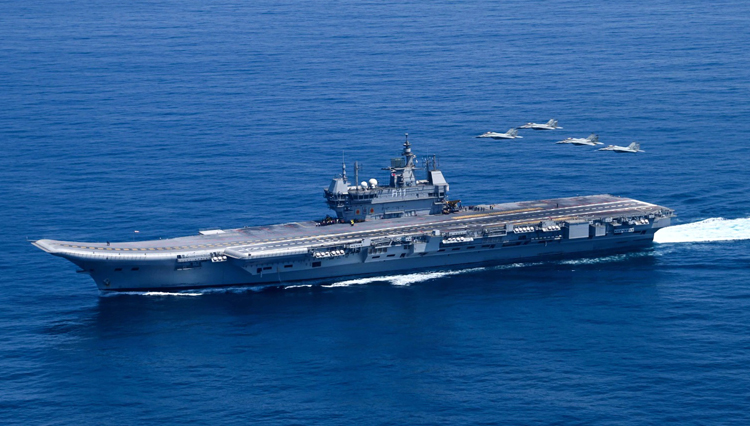
India is on the brink of finalising a significant defence deal with France for the procurement of 26 Rafale Marine jets. This acquisition aims to enhance the Indian Navy's operational capabilities, particularly for deployment on the INS Vikrant aircraft carrier. France has submitted its final price offer for the Rafale Marine jets. The deal is valued at about ₹50,000 crore and is expected to be finalised before the end of the current financial year. These jets are expected to include advanced weaponry like Meteor missiles and anti-ship capabilities. The Rafale (M) jets will bolster Indian Navy's maritime strike capabilities and ensure compatibility with existing Indian Air Force (IAF) Rafale aircraft, enhancing overall operational synergy. The expected delivery timeline for these jets would likely commence around 2027.
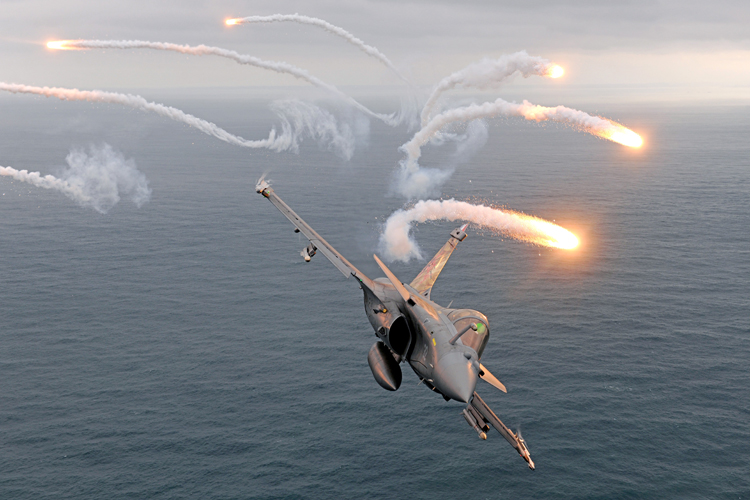
On December 2, 2024, the US Department of State approved a possible Foreign Military Sale (FMS) of communication, sensor, and logistics equipment associated with the Sikorsky MH-60R Seahawk helicopters to India. The FMS worth $1.17 billion includes the sale of 30 Multifunctional Information Distribution System Joint Tactical Radio Systems (MIDS JTRSs) for the Indian Navy's MH-60R helicopters.
India is finalising a ₹50,000 crore deal with France for 26 Rafale Marine jets, enhancing the Navy's operational capabilities and maritime strike potential by 2027.
On December 3, 2024, Admiral Dinesh K. Tripathi, the Chief of the Indian Navy, highlighted in a press conference the necessity for 31 additional warships and submarines, which includes six submarines under Project 75(I); advanced conventional submarines equipped with state-of-the-art technology, including Air Independent Propulsion (AIP) systems. In addition to the submarines, there is also a plan to acquire 60 utility helicopters for the Navy. Admiral Tripathi said the Indian Navy is set to enhance its underwater capabilities significantly with the introduction of indigenously designed nuclear attack submarines (SSNs) by 2036, approval for which has been accorded by the Cabinet Committee on Security (CCS).

Concurrently, on December 3, 2024, the Defence Minister Rajnath Singh-led Defence Acquisition Council (DAC) approved five capital acquisitions worth ₹21,772 crores which included 31 x New Water Jet Fast Attack Crafts (NWJFACs) for the Indian Navy; designed to perform the task of low-intensity maritime operations, surveillance, patrol, and search and rescue operations close to the coast. The vessels are also effective in carrying out anti-piracy missions, especially in and around island territories in India. The DAC also approved the procurement of 120 x Fast Interceptor Craft (FIC-1) which are capable of performing multiple roles, including escorting aircraft carriers, destroyers, frigates, and submarines for coastal defence.
On December 4, 2024, Adani Defence and Aerospace delivered the second Drishti-10 Starliner surveillance drone to the Indian Navy. Drishti 10 Starliner drone is an advanced intelligence, surveillance, and reconnaissance (ISR) platform with 36 hours endurance and 450 kg payload capacity; the platform provides over the horizon, persistent multi payload, fully autonomous capabilities and Satcom-based operations. These drones mark the first-ever integration of such an advanced payload suites onto a MALE platform, enabling the Indian Navy with differentiated capabilities to dominate maritime surveillance.





